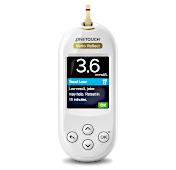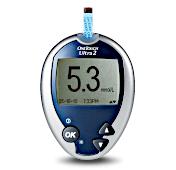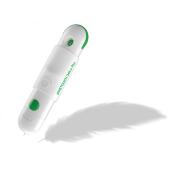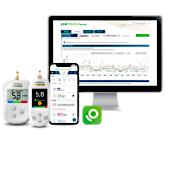Managing the Dawn Phenomenon

Early morning highs in blood glucose (the “dawn phenomenon”) are common in people with diabetes. These tips can help manage them.
You may have heard the term “the dawn phenomenon.” Our bodies produce a surge of hormones starting 2 to 3 hours before our usual wake-up time that increases our fasting (pre-meal) glucose levels. Because you lack the insulin action needed to regulate the increase, your fasting glucose levels in the early morning (or dawn) are high. Managing these early morning highs can help you gain better control of your diabetes. Here are three strategies to help you do this:
- Eat dinner earlier, with fewer carbohydrates. Both when you eat and what you eat can affect your early morning blood glucose levels. By eating earlier, you can better match the “blood glucose raising” effect of carbs to your insulin dose. If you are hungry for a night snack, opt for ones that do not increase your blood glucose, such as a handful of nuts, a chunk of cheese, or a boiled egg.
Tip: Try substituting grilled vegetables or a salad in place of rice or potatoes, or cut your usual portion of carbs in half at dinner. - Do something active after dinner. A little exercise can help to lower blood glucose levels during the night and into the early morning hours.
Tip: Go for a walk, practice yoga or cycle for 15 to 20 minutes on a stationary bike after dinner. - Track your morning blood glucose levels. For a week or two, test your blood glucose every morning. Look for patterns that relate to your activities or what you ate the previous night.
If your morning blood glucose levels are consistently high, checking your blood sugar at bedtime, once during the night around 2 a.m. or 3 a.m., and again when you wake up for several nights in a row will help you and your doctor determine if what you’re experiencing is the dawn phenomenon or if there's another reason behind it. Check with your healthcare provider to learn more or if you have any questions.
References:
Schmidt I., Hadji-Georgopoulos A, Rendell M, Et Al. (1981, November 01). The Dawn Phenomenon, an Early Morning Glucose Rise: Implications for Diabetic Intraday Blood Glucose Variation. Retrieved March 10, 2021, from https://care.diabetesjournals.org/content/4/6/579
Castro, R., & Mayo Clinic. (2020, November 13). The dawn phenomenon: What can you do? Retrieved March 10, 2021, from https://www.mayoclinic.org/diseases-conditions/diabetes/expert-answers/dawn-effect/faq-20057937
Related articles
CA-OTB-2100028












